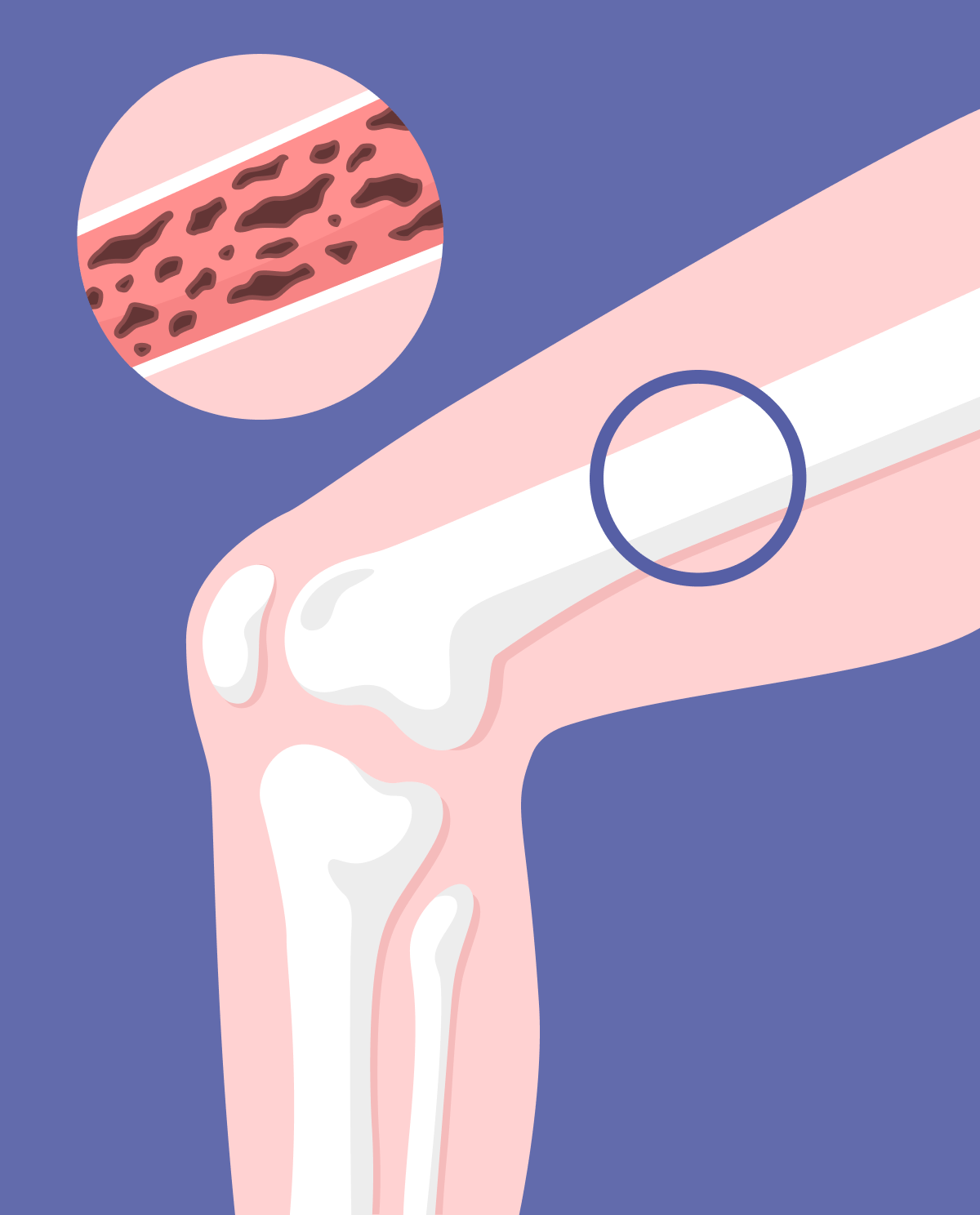Factors affecting the development of osteoporosis
Bone turnover is described as "out with the old, in with the new". It is a continuous process that occurs during our lifetime but, if bone resorption / breakdown is happening at a faster rate than bone replacement, it will induce brittleness of the bones. Several factors linked to the development of osteoporosis have been documented:
- Unhealthy/unbalanced nutrition,
- Genetics,
- Female gender,
- Imbalance in hormones,
- Medication (corticosteroids),
- Hyperparathyroidism ,
- Advanced age,
- Smoking and alcohol,
- Low BMI (body mass index),
- Chronic kidney disease.
Types of osteoporosis
- Osteopenia: weaker bones but not classified as osteoporosis yet. It’s a pre-osteoporosis.
- Primary osteoporosis: bone loss occurring naturally. This section can be further broken down into type I (post-menopausal osteoporosis) and type II (senile osteoporosis).
- Secondary osteoporosis: bone loss unrelated to the normal aging process. It can be a result of disease (i.e., AIDS, heart failure, cystic fibrosis, CKD, and so on.) or due to lifestyle factors (low BMI, alcohol and cigarettes, obesity, medication, and so on).
Diagnosis of osteoporosis
First and foremost, your primary healthcare physician will take a complete history:
- Family history,
- Diet,
- Health conditions,
- Medication,
- Previous falls and bone breaks,
- Hormonal replacement therapy.
Secondly, the doctor will perform a test to measure your bone density using the DEXA (dual-energy X-ray absorptiometry). The test is quick and painless. Your bone density will be compared to that of a healthy young individual and calculations of the standard deviation will give your primary healthcare provider an idea as to if the bone density is normal, if you have osteopenia or if you have osteoporosis.
Treatment of osteoporosis
Treatment is widely dependent on the calculated standard deviation of bone density thus if you are at risk of breaking your bones within the next 10 years. If you are classified as low-risk, lifestyle modifications will be employed. On the other hand, if you are at high-risk, you can be prescribed bisphosphonates to strengthen your bones and decrease the risk of fracture.








